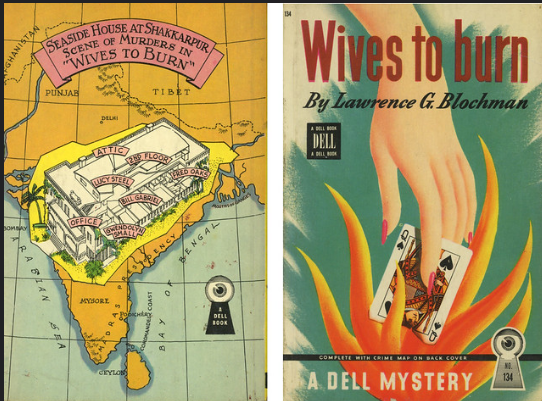Book Review: Wives to Burn by Lawrence G. Blochman
William Shakespeare Gabriel may have bitten off more than he can chew when he accepted an assignment to go to India and track down Fred Oaks. Bill’s past as a reporter may make him an excellent investigator for the Five Continents Detective Agency, but India’s a big country to track down one missing soldier of fortune in. And it doesn’t help that client Lucy Steel has insisted on coming to Shakkarpur to check up on Bill, but won’t say why she needs to meet Mr. Oaks.

Things take a turn for the worse when Lucy turns up dead in Fred Oaks’ hotel room. The owner of Seaside House, Gwendolyn Small, claims to know nothing about the crime, but tells Bill’s fortune with cards in a way that suggests there’s more going on. Fred’s the too-obvious suspect, but although he’s being very uncooperative, Bill isn’t convinced he’s the killer.
Lawrence G. Blochman (1900-1975) had been a journalist in India before becoming a mystery writer, so the experience of Westerners living in India comes across well. (Shakkarpur itself is a fictitious city, however.) It’s also a book about a very specific point in time, as the fact that Germany (and Russia) is about to invade Poland factors into Fred Oaks’ motivations.
The title is inspired by the practice of Sati, which one character opines was probably instituted to discourage husband-poisoning, but no instances of it occur in the book. However, bigamy is a running topic. Religious strife between Hindu and Muslim citizens is important to the plot, and colonialist attitudes from the Westerners are in evidence. Gandhi gets mentioned as one of several people the younger, less traditionalist Indian generation admire.
A Fascist agent gets way more sympathetic treatment than a similar character would have even two years later, a good example of how history can change attitudes.
The mystery aspect is satisfying enough, but I think the real value of the book is as a period piece, capturing a moment just before the war and independence brought massive social change.
I’d recommend it to mystery fans with an interest in colonial India.
